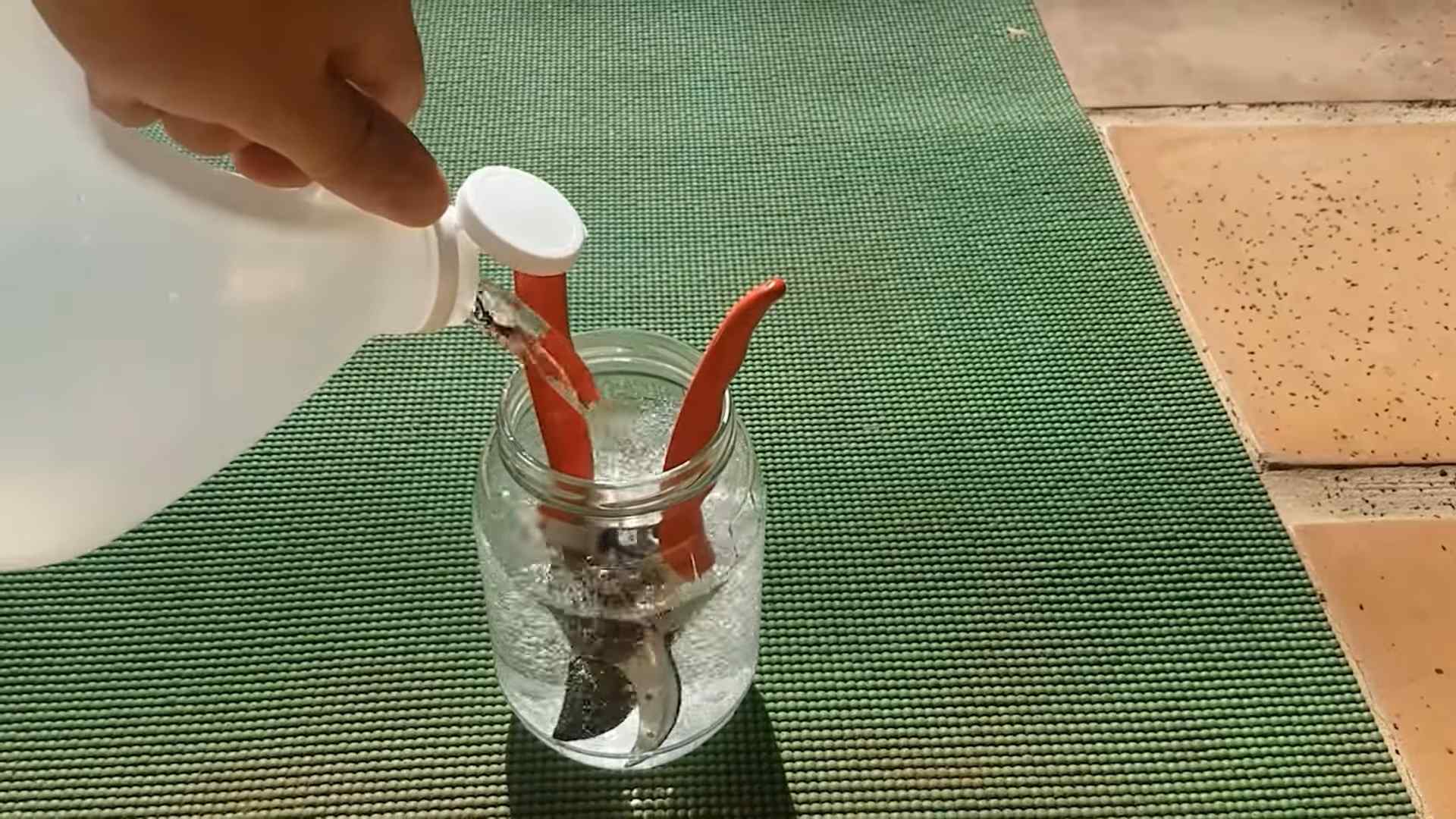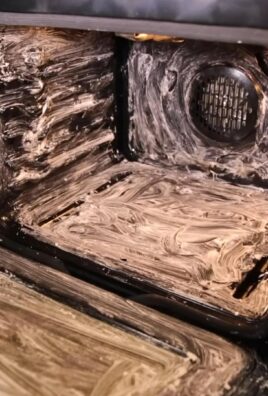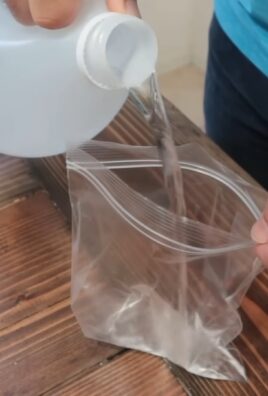White vinegar home cleaning uses are more versatile and powerful than you might think! Are you tired of harsh chemicals and expensive cleaning products cluttering your cabinets? Imagine a world where one simple, affordable ingredient could tackle almost any cleaning task in your home. That’s the magic of white vinegar!
For centuries, vinegar has been a staple in households worldwide, not just for culinary purposes but also for its remarkable cleaning properties. From ancient civilizations using it as a disinfectant to modern-day eco-conscious cleaners, vinegar’s legacy is deeply rooted in our history. It’s a natural, biodegradable alternative that’s kind to your wallet and the environment.
In today’s busy world, we’re all looking for ways to simplify our lives and reduce our exposure to harmful chemicals. That’s where these white vinegar home cleaning uses come in. I’m going to share some of my favorite DIY tricks and hacks that will transform the way you clean. From sparkling windows to deodorized drains, you’ll be amazed at what this humble ingredient can achieve. Get ready to ditch the chemicals and embrace the power of vinegar!

DIY Cleaning Powerhouse: Unleashing the Magic of White Vinegar
Hey there, fellow DIY enthusiasts! I’m so excited to share one of my absolute favorite cleaning hacks with you: harnessing the incredible power of white vinegar. Seriously, this stuff is a game-changer. Forget those expensive, chemical-laden cleaners – white vinegar is a natural, affordable, and surprisingly effective alternative for tackling a multitude of cleaning tasks around your home.
Why White Vinegar?
Before we dive into the nitty-gritty, let’s talk about why white vinegar is such a cleaning superstar. It’s all about the acetic acid! This mild acid is what gives vinegar its cleaning prowess. It’s a natural disinfectant, deodorizer, and degreaser. Plus, it’s non-toxic and environmentally friendly, which is a huge win in my book.
General Guidelines for Using White Vinegar
Before we jump into specific cleaning projects, here are a few general guidelines to keep in mind:
* Dilution is Key: Always dilute white vinegar with water, especially when cleaning delicate surfaces. A 50/50 solution is usually a good starting point.
* Test First: Before cleaning an entire surface, always test the vinegar solution in an inconspicuous area to ensure it doesn’t cause any damage or discoloration.
* Avoid Certain Surfaces: Don’t use white vinegar on natural stone surfaces like marble or granite, as the acid can etch them. Also, avoid using it on waxed furniture, as it can strip the wax.
* Ventilation is Important: While vinegar is non-toxic, the smell can be a bit strong. Make sure to ventilate the area you’re cleaning by opening windows or turning on a fan.
* Don’t Mix with Bleach: This is a big one! Mixing vinegar with bleach creates toxic chlorine gas, which is extremely dangerous.
Cleaning Project 1: Sparkling Clean Kitchen
The kitchen is often the dirtiest room in the house, but fear not! White vinegar can help you conquer even the toughest kitchen messes.
Cleaning the Kitchen Sink
1. Rinse the Sink: Start by rinsing your sink with warm water to remove any loose debris.
2. Sprinkle with Baking Soda: Generously sprinkle baking soda all over the sink surface.
3. Spray with Vinegar: Pour or spray white vinegar over the baking soda. It will fizz – that’s a good thing!
4. Scrub: Use a sponge or scrub brush to scrub the sink thoroughly, paying attention to any stubborn stains or grime.
5. Rinse and Dry: Rinse the sink with warm water and dry it with a clean cloth. Your sink should be sparkling clean and fresh!
Degreasing the Stovetop
1. Remove Grates and Burner Caps: Remove the stovetop grates and burner caps.
2. Soak Grates and Caps: Soak the grates and burner caps in a solution of equal parts white vinegar and hot water for at least 30 minutes. For really stubborn grease, you can add a squirt of dish soap.
3. Wipe Down the Stovetop: While the grates and caps are soaking, wipe down the stovetop with a solution of equal parts white vinegar and water.
4. Scrub Grates and Caps: After soaking, scrub the grates and burner caps with a scrub brush to remove any remaining grease.
5. Rinse and Dry: Rinse the grates and burner caps with water and dry them thoroughly before replacing them on the stovetop.
Cleaning the Microwave
1. Vinegar Steam Clean: Fill a microwave-safe bowl with 1 cup of water and 2 tablespoons of white vinegar.
2. Microwave for 5 Minutes: Microwave the mixture on high for 5 minutes. This will create steam that loosens any splatters and grime inside the microwave.
3. Let Stand for 5 Minutes: Let the microwave stand for 5 minutes without opening the door. This allows the steam to continue working its magic.
4. Wipe Clean: Carefully remove the bowl and wipe down the inside of the microwave with a clean cloth or sponge. The grime should wipe away easily.
Freshening the Dishwasher
1. Empty the Dishwasher: Make sure your dishwasher is empty.
2. Place Vinegar in a Bowl: Place a dishwasher-safe bowl filled with 1 cup of white vinegar on the top rack of the dishwasher.
3. Run a Hot Cycle: Run the dishwasher on a hot cycle. The vinegar will help to remove any lingering odors and mineral buildup.
Cleaning Project 2: Bathroom Bliss
The bathroom can be a breeding ground for germs and grime, but white vinegar can help you keep it clean and fresh.
Cleaning the Showerhead
1. Fill a Bag with Vinegar: Fill a plastic bag with white vinegar.
2. Secure the Bag: Secure the bag around the showerhead with a rubber band or twist tie, ensuring that the showerhead is completely submerged in the vinegar.
3. Soak Overnight: Let the showerhead soak in the vinegar overnight. This will dissolve any mineral buildup that’s clogging the showerhead.
4. Remove and Rinse: Remove the bag and rinse the showerhead thoroughly with water.
Cleaning the Toilet
1. Pour Vinegar into the Bowl: Pour 1 cup of white vinegar into the toilet bowl.
2. Let Sit for 30 Minutes: Let the vinegar sit in the bowl for at least 30 minutes. This will help to loosen any stains or mineral buildup.
3. Scrub and Flush: Scrub the toilet bowl with a toilet brush and flush.
Cleaning Shower Doors and Walls
1. Mix Vinegar Solution: Mix equal parts white vinegar and water in a spray bottle.
2. Spray and Wipe: Spray the solution onto the shower doors and walls and let it sit for a few minutes.
3. Scrub and Rinse: Scrub the surfaces with a sponge or scrub brush and rinse with water.
Cleaning Project 3: Laundry Love
White vinegar isn’t just for cleaning surfaces – it can also work wonders in your laundry room!
Fabric Softener Alternative
1. Add Vinegar to the Rinse Cycle: Add 1/2 cup of white vinegar to the fabric softener dispenser of your washing machine.
2. Enjoy Softer Clothes: The vinegar will help to soften your clothes and remove any lingering detergent residue. Don’t worry, your clothes won’t smell like vinegar!
Odor Eliminator
1. Soak Stinky Clothes: For clothes with strong odors, like gym clothes or musty towels, soak them in a solution of 1 cup of white vinegar and cold water for 30 minutes before washing.
2. Wash as Usual: Wash the clothes as usual.
Brightening Whites
1. Add Vinegar to the Wash: Add 1/2 cup of white vinegar to the wash cycle along with your regular detergent.
2. Enjoy Brighter Whites: The vinegar will help to brighten your white clothes and remove any dinginess.
Cleaning Project 4: Deodorizing and Freshening
White vinegar is a fantastic natural deodorizer. Here are a few ways to use it to freshen up your home:
Eliminating Odors in the Air
1. Vinegar Air Freshener: Simmer a pot of water with a few tablespoons of white vinegar on the stovetop. The steam will help to neutralize odors in the air. You can also add some citrus peels or spices for a more pleasant scent.
2. Vinegar Spray: Fill a spray bottle with white vinegar and lightly spray it around the room to eliminate odors. The vinegar smell will dissipate quickly.
Freshening Carpets and Rugs
1. Vinegar Carpet Deodorizer: Mix equal parts white vinegar and water in a spray bottle.
2. Lightly Spray: Lightly spray the mixture onto your carpets and rugs.
3. Let Dry: Let the carpets and rugs dry completely. The vinegar will help to eliminate odors and freshen them up.
Removing Pet Odors
1. Clean Accidents Immediately: If your pet has an accident on the carpet, clean it up immediately with a cloth or paper towels.
2. Saturate with Vinegar: Saturate the area with a solution of equal parts white vinegar and water.
3. Blot and Dry: Blot the area with a clean cloth and let it dry completely.
Important Considerations
While white vinegar is generally safe and effective, there are a few things to keep in mind:
* Always dilute vinegar before using it on surfaces.
* Test the solution in an inconspicuous area first.
* Avoid using vinegar on natural stone surfaces or waxed furniture.
* Never mix vinegar with bleach.

Conclusion
So, there you have it! Mastering the art of **white vinegar home cleaning** is not just about saving money; it’s about embracing a more sustainable and healthier lifestyle. We’ve explored how this humble kitchen staple can transform into a powerful cleaning agent, tackling everything from stubborn grime to lingering odors. The versatility of white vinegar is truly remarkable, and its effectiveness is undeniable.
Why is this DIY trick a must-try? Because it’s simple, effective, and eco-friendly. You’re ditching harsh chemicals that can irritate your skin and pollute your home environment, opting instead for a natural solution that’s gentle yet powerful. You’re also saving a significant amount of money compared to purchasing specialized cleaning products. Think of all the things you can do with the money you save!
But the benefits don’t stop there. Using white vinegar for cleaning reduces your reliance on plastic bottles and packaging, contributing to a more sustainable future. You’re making a conscious choice to minimize your environmental impact, one spray bottle at a time.
Ready to take your cleaning game to the next level? Here are a few suggestions and variations to get you started:
* **Infused Vinegar:** Add citrus peels (lemon, orange, grapefruit) to your vinegar for a refreshing scent. Let it steep for a few weeks before using. This adds a pleasant aroma to your cleaning routine.
* **Vinegar and Baking Soda Power Duo:** For tough stains and clogs, combine vinegar with baking soda. The fizzing action helps to loosen dirt and grime. Just be sure to use this mixture in a well-ventilated area.
* **Essential Oil Boost:** Add a few drops of your favorite essential oils (tea tree, lavender, eucalyptus) to your vinegar cleaning solution for added antibacterial and aromatherapy benefits.
* Vinegar for Laundry: Use white vinegar as a natural fabric softener and odor eliminator in your laundry. Add 1/2 cup to the rinse cycle.
* Vinegar for Windows and Mirrors: Create a streak-free shine by mixing equal parts white vinegar and water in a spray bottle.
We encourage you to experiment with these variations and find what works best for you and your home. The possibilities are endless!
Now it’s your turn. We challenge you to try these **white vinegar home cleaning** tricks and experience the difference for yourself. Share your experiences with us! What cleaning challenges did you conquer with vinegar? What variations did you try? What tips and tricks did you discover along the way? Let us know in the comments below! Your insights could help others discover the amazing power of white vinegar. Embrace the simplicity, embrace the effectiveness, and embrace a cleaner, greener home with the magic of white vinegar.
FAQ
What kind of white vinegar should I use for cleaning?
The best type of white vinegar to use for cleaning is distilled white vinegar. It typically has an acidity level of around 5%, which is strong enough to kill bacteria and dissolve grime without being too harsh on surfaces. Avoid using flavored vinegars, as they may contain sugars or other additives that can leave a sticky residue. Cleaning vinegar is also available, which has a slightly higher acidity level (around 6%), making it even more effective for tough cleaning tasks. However, distilled white vinegar is generally sufficient for most household cleaning needs.
Is white vinegar safe to use on all surfaces?
While white vinegar is a versatile cleaner, it’s not safe for all surfaces. Avoid using it on natural stone surfaces like marble, granite, and limestone, as the acidity can etch and damage them. It’s also best to avoid using vinegar on waxed furniture, as it can strip the wax finish. Be cautious when using it on hardwood floors, as it can dull the finish over time. Always test vinegar on an inconspicuous area first to ensure it doesn’t cause any damage or discoloration. For delicate surfaces, dilute the vinegar with water to reduce its acidity.
How do I get rid of the vinegar smell after cleaning?
The vinegar smell is temporary and usually dissipates within a few hours. To speed up the process, you can open windows and doors to ventilate the area. You can also add a few drops of essential oils to your vinegar cleaning solution to mask the smell. Another option is to wipe down surfaces with a damp cloth after cleaning with vinegar. The smell will fade quickly, leaving your home clean and fresh.
Can I mix white vinegar with bleach?
No, never mix white vinegar with bleach. This combination creates chlorine gas, which is highly toxic and can cause serious respiratory problems, burns, and even death. Always use vinegar and bleach separately, and never mix them in the same container or cleaning solution. If you’re using bleach to disinfect a surface, rinse it thoroughly with water before cleaning with vinegar. Safety should always be your top priority when using cleaning products.
How can I use white vinegar to clean my washing machine?
To clean your washing machine with white vinegar, pour 2 cups of white vinegar into the detergent dispenser. Run the washing machine on a hot, empty cycle. This will help to remove detergent buildup, mineral deposits, and odors. For a more thorough cleaning, you can also add 1/2 cup of baking soda to the drum of the washing machine before running the cycle. Repeat this process every month to keep your washing machine clean and fresh.
Can white vinegar be used to unclog drains?
Yes, white vinegar can be used to unclog drains. Pour 1 cup of baking soda down the drain, followed by 1 cup of white vinegar. Let the mixture fizz for 30 minutes, then flush the drain with hot water. The baking soda and vinegar react to create carbon dioxide, which helps to loosen clogs. For stubborn clogs, you may need to repeat this process several times. You can also use a plunger to help dislodge the clog. If the clog persists, it’s best to call a professional plumber.
How do I clean my coffee maker with white vinegar?
To clean your coffee maker with white vinegar, fill the water reservoir with equal parts white vinegar and water. Run the coffee maker through a full brewing cycle. Then, run two cycles with fresh water to rinse away any remaining vinegar. This will help to remove mineral buildup and improve the taste of your coffee. Repeat this process every month to keep your coffee maker clean and functioning properly.
Is white vinegar effective for killing mold?
Yes, white vinegar is effective for killing mold. Spray undiluted white vinegar onto the moldy surface and let it sit for an hour. Then, scrub the surface with a brush and wipe it clean with a damp cloth. Vinegar’s acidity kills many types of mold. For porous surfaces like drywall, you may need to repeat this process several times. Ensure the area is well-ventilated to prevent mold from returning. For large mold infestations, it’s best to consult a professional mold remediation service.
Can I use white vinegar to clean my dishwasher?
Yes, you can use white vinegar to clean your dishwasher. Place a dishwasher-safe cup filled with white vinegar on the top rack of the empty dishwasher. Run the dishwasher on a hot cycle. The vinegar will help to remove food particles, mineral deposits, and odors. You can also pour 1 cup of white vinegar into the bottom of the dishwasher before running the cycle. Repeat this process every month to keep your dishwasher clean and functioning properly.
What are some other uses for white vinegar in the home?
Beyond the cleaning tips already mentioned, white vinegar has numerous other uses around the home. It can be used to remove hard water stains from showerheads and faucets, polish chrome and stainless steel, remove sticky residue from labels, deodorize garbage disposals, and even kill weeds in your garden. Its versatility makes it a valuable and cost-effective addition to any household.




Leave a Comment